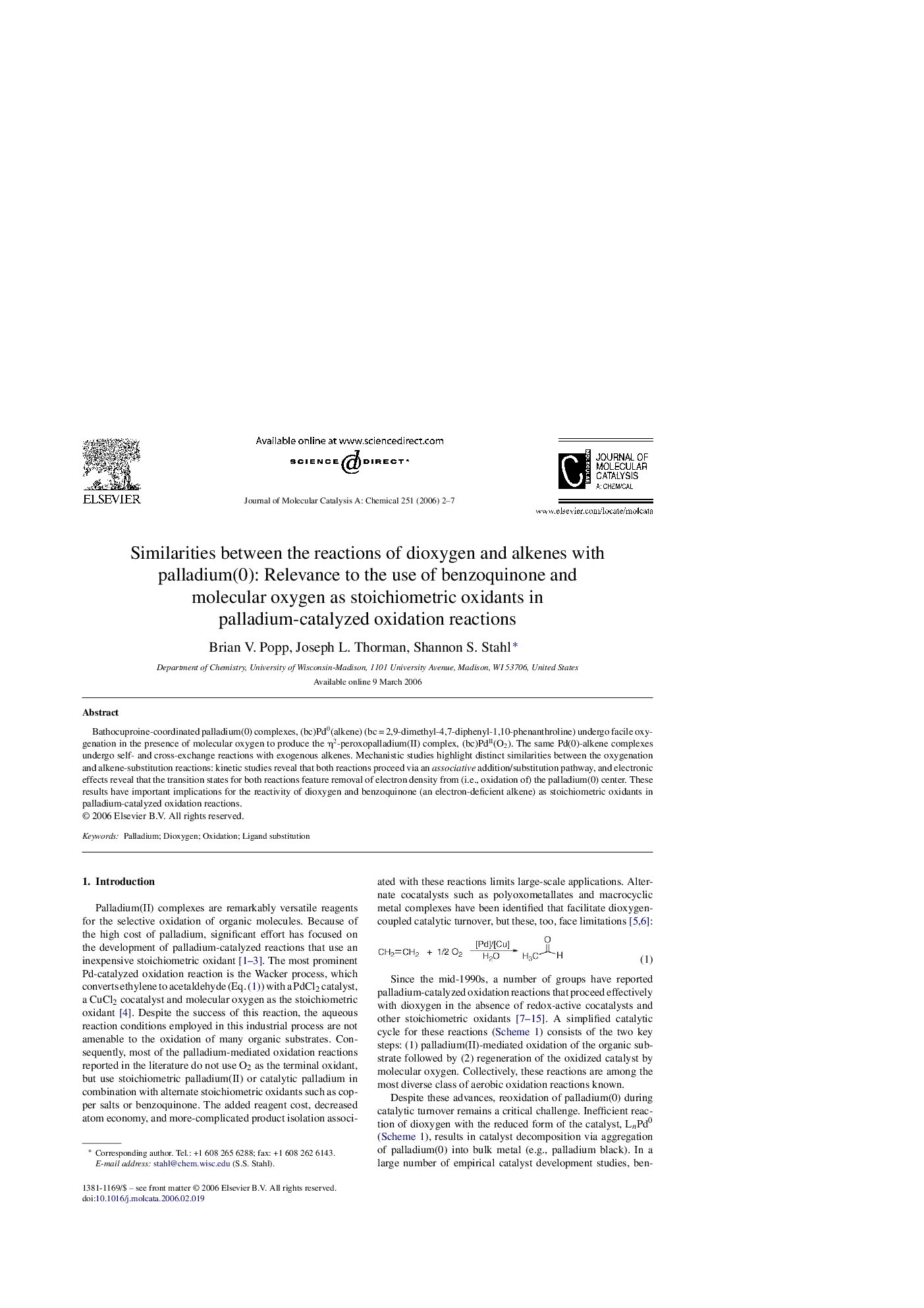| Article ID | Journal | Published Year | Pages | File Type |
|---|---|---|---|---|
| 68468 | Journal of Molecular Catalysis A: Chemical | 2006 | 6 Pages |
Bathocuproine-coordinated palladium(0) complexes, (bc)Pd0(alkene) (bc = 2,9-dimethyl-4,7-diphenyl-1,10-phenanthroline) undergo facile oxygenation in the presence of molecular oxygen to produce the η2-peroxopalladium(II) complex, (bc)PdII(O2). The same Pd(0)-alkene complexes undergo self- and cross-exchange reactions with exogenous alkenes. Mechanistic studies highlight distinct similarities between the oxygenation and alkene-substitution reactions: kinetic studies reveal that both reactions proceed via an associative addition/substitution pathway, and electronic effects reveal that the transition states for both reactions feature removal of electron density from (i.e., oxidation of) the palladium(0) center. These results have important implications for the reactivity of dioxygen and benzoquinone (an electron-deficient alkene) as stoichiometric oxidants in palladium-catalyzed oxidation reactions.
Graphical abstractReactions of palladium(0)-alkene complexes with exogenous alkenes and dioxygen have been explored. Kinetic studies of these reactions indicate that they proceed through associative substitution pathways with similar transition states that feature charge transfer from the palladium(0) to the incoming substrate. These mechanistic results provide a framework for understanding the similarity reactivity of benzoquinone and dioxygen in palladium-catalyzed oxidation reactions. Figure optionsDownload full-size imageDownload as PowerPoint slide
